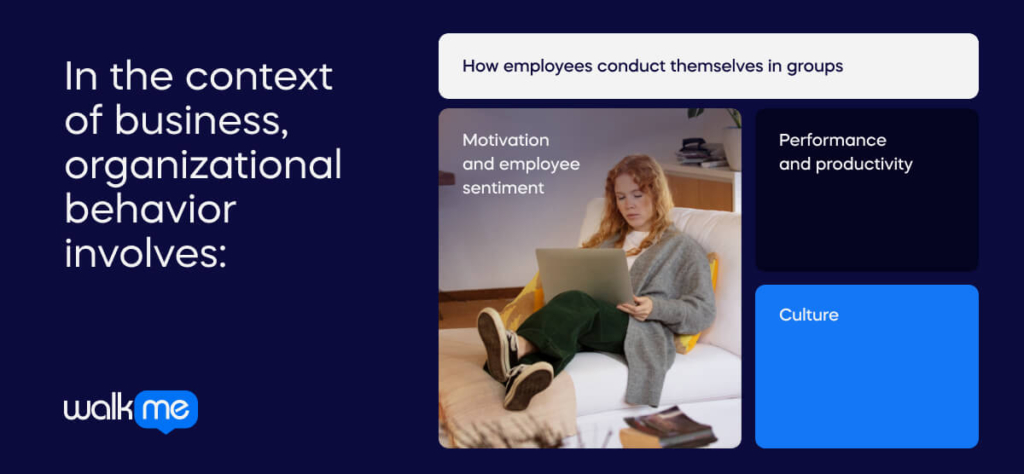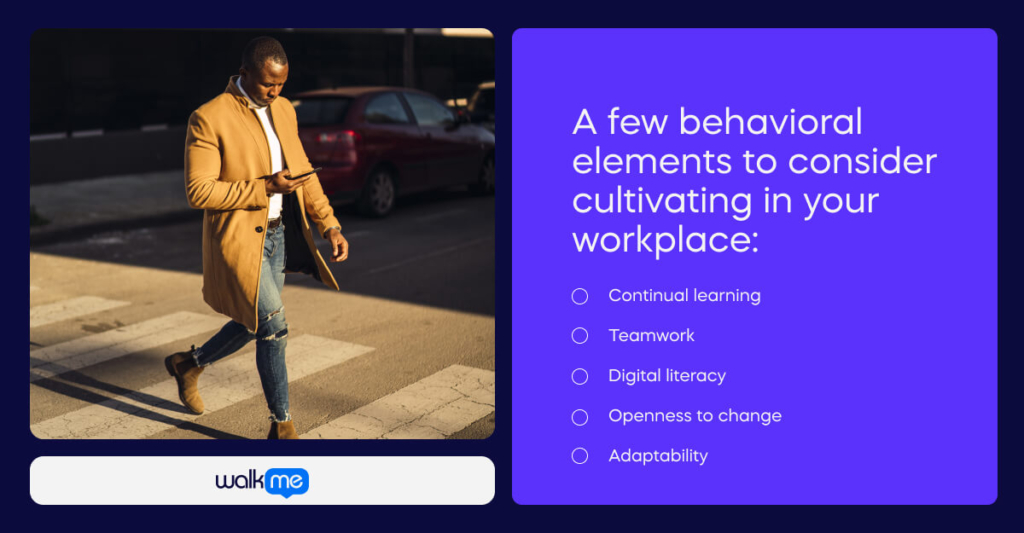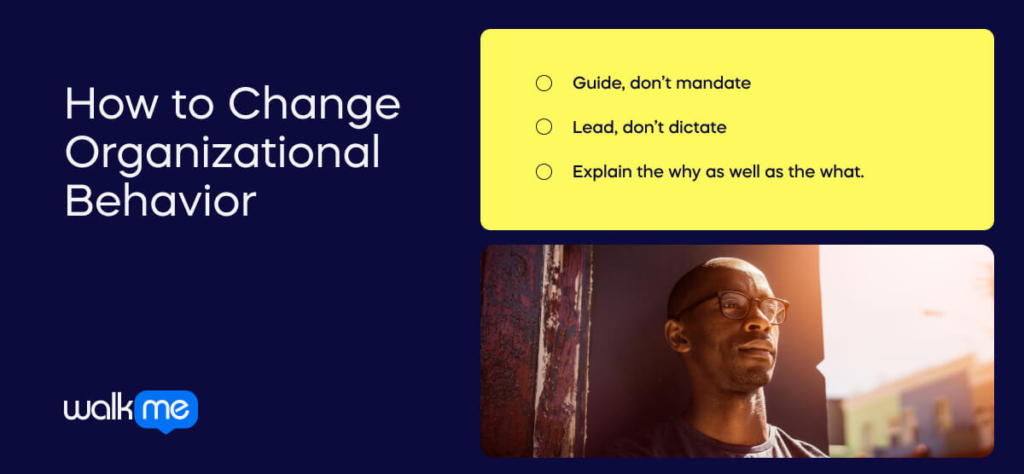Organizational behavior and change management are closely related – but how do they affect one another?
Because organizational behavior affects organizational change, change management professionals must understand this relationship.
Below, we will look at:
- What organizational behavior is
- How culture and behavior are related
- The role of organizational behavior in change management
To start off, let’s understand organizational behavior.
What Is Organizational Behavior?
The short answer is that organizational behavior is how employees behave.
However, business professionals should understand this concept in more depth.
Human resources professionals, especially, should understand organizational behavior in depth. After all, human resources and organizational behavior are very closely related.
In the context of business, organizational behavior involves:

- How employees conduct themselves in groups. This includes how groups interact with other groups, as well as how teams behave. Behavioral characteristics can include being cooperative, being uncooperative, being competitive, being proactive, being passive, and so forth.
- Motivation and employee sentiment. Employee sentiment, satisfaction, motivation, morale, and other motivations all impact behavior. The employee experience has a direct impact on such emotions – and, as a result, on how workers act and behave.
- Performance and productivity. Employee productivity and performance can be seen as an aspect of employee behavior. One of the biggest factors that affects employee performance is the employee experience – their satisfaction levels, engagement, morale, and so forth.
- Culture. Every organization has a unique culture. And that culture is intertwined with employee behavior. A culture centered around proactive learning, for instance, will likely foster behaviors that are open to learning, new ideas, and change.
Organizational behavior is closely related to organizational culture, the workplace environment, and the employee experience.
Organizational Behavior and Change Management
Improving organizational behavior can be a path to a more successful, more efficient organization.
Organizational behavior, culture, and attitudes can affect change management initiatives in many ways.
A few examples include:
- Increased Efficiency – Better attitudes and behaviors will result in greater cooperation and less resistance to change.
- Teamwork – Good behavior and culture often goes hand-in-hand with good team synergy. And good teamwork, of course, can dramatically improve organizational change results.
- Timelines and Deadlines – More cooperative, efficient teams will execute projects more quickly.
- Project Outcomes – As mentioned, more engaged employees are more productive and they perform better. This, in turn, will help produce better outcomes for change projects.
- Shorter Learning Curves – Behaviors and cultures that are pro-learning will decrease resistance to learning new skills and ideas. That motivation will translate into more efficient worker training and shorter time-to-competency.
The good news is that it is possible to positively affect employee behavior.
Is There Such a Thing as “Good” Organizational Behavior?
With the right approach, change managers can cultivate a culture that is more supportive of change projects.
Such a culture, in turn, will improve employee behavior and the results of change projects.
Here are a few behavioral elements to consider cultivating in your workplace:

- Continual learning. Organizational learning is critical in today’s economy. The digital revolution, for instance, requires many workers to continually update and upgrade their skills. As mentioned, a culture of learning will cultivate behaviors that are proactive about learning and improvement.
- Teamwork. Clearly, the better that groups work together, the more positive their impact will be on the organization.
- Digital literacy. Digital fluency is another positive trait to build into organizational culture. In a digital workplace culture, workers will be more digitally skilled, more productive, and more successful in the digital age.
- Openness to change. When employees are open to change, they are more likely to embrace and support new change initiatives. That support will then translate into better performance and productivity during times of change.
- Adaptability. Resilience is another valuable trait when it comes to change management. The more adaptable workers are, the better they can cope with unforeseen events and changes.
There is no such thing as a “perfect” workplace culture. And different organizations will have different ideas about what behaviors are productive, and which are counterproductive.
What matters most is cultivating organizational behaviors that fit your company.
That is, cultivate behaviors that align with your corporate mission, values, and culture.
And, if your aim is to increase the efficiency of your organizational change initiatives, then develop behaviors that support the change management function.
How to Change Organizational Behavior

As experienced change managers know, change cannot be forced upon employees.
But behaviors and cultures can be shaped and guided.
Here are a few ways to do that:
- Guide, don’t mandate. Cultural and behavioral changes require a movement, not a mandate. This means delving deeply into the mission, philosophy, beliefs, and values of an organization’s culture – then adjusting those to reflect a new vision.
- Lead, don’t dictate. True leaders lead by example. They embody change first, demonstrating the behaviors and attitudes that they are seeking to achieve. This approach will go a long way towards earning trust and support from employees.
- Explain the why as well as the what. Explaining the reasons for an activity or change will drastically improve results. By helping workers understand the “why” of change management, employees will understand the purpose of a proposed change – then they will have a reason to support that change.
Behavior and culture are not easy to change.
But with the right approach, managers can affect behavior – and, as a result, create behaviors that facilitate and fuel organizational change efforts.

